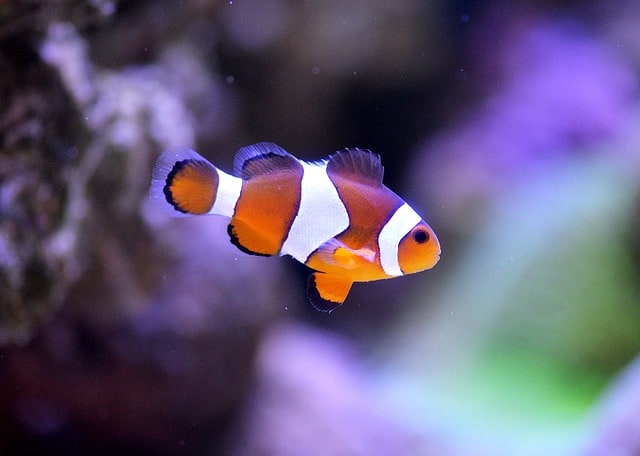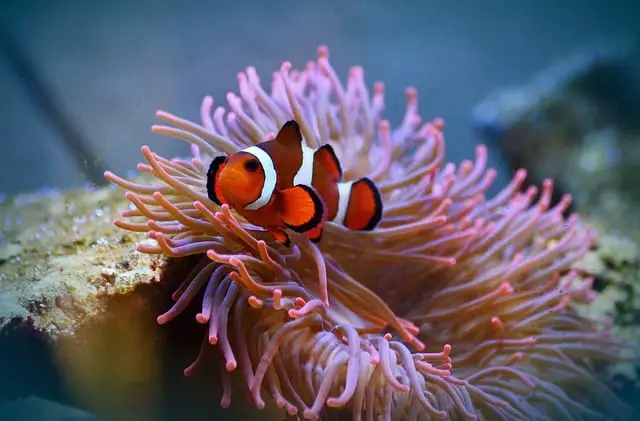Tangs (or surgeonfish as they’re sometimes called) are bright, beautiful fish that make a welcome addition to any extra-large, well-established saltwater aquarium. These fish (surgeonfish, tangs) come in a variety of colors and are a joy to observe in captivity. If you have a marine tank and are thinking of introducing yellow tangs (in particular), you may be wondering if they’re difficult to keep?
Yellow tangs are a hardy fish and generally easy to care for – when kept in a large, mature aquarium that’s properly maintained and closely resembles their natural habitat. An abundance of space to swim about freely as well as live rock with plenty of algae for grazing is a must for this species. Yellow tangs can tolerate changes in water conditions better than other tangs and have a lower aggression level.
Now that you know it’s not hard to keep tangs in a marine tank, let’s explore this topic further and in more detail together. We’ll learn if tangs are good for beginner aquarium hobbyists, if they can me kept together with other tangs, and which fish species make the best tankmates. We’ll also discover what the life expectancy of a tang is and how to increase their longevity in captivity.
So, if you’re ready to ‘dive deeper’ into the aquatic world of the yellow tang fish and learn if they’re a good choice for beginner aquarium hobbyists, then let’s begin!
Are Yellow Tangs Good for Beginners?
Regarding saltwater fish and their care level, yellow tangs are considered easy to moderate. Hardy and undemanding, this species will do well in a marine tank that’s been fully cycled and well-established. An abundance of algae-rich coral must be present as tangs like to graze on nutrient-rich greenery such as seaweed and kelp throughout the day.
Which Tangs are the Easiest to Care For?
When it comes to surgeonfish, blue and yellow tangs are likely the least demanding. They have lower aggression levels than their clown or purple cousins, are easy to feed, and can tolerate fluctuations in water parameters better than other tangs. When keep in a sub-tropical, reef-style tank that’s been fully cycled and set-up to mimic their natural habitat, yellow tangs will do quite well in captivity.
Can Yellow Tangs be Kept Together in the Same Tank?
Yellow tangs have a reputation for being territorial. They can become hostile towards other tangs, especially when housed in too small of a tank. Therefore, if you want to keep multiples in the same aquatic environment, you’ll need an extra long and large tank. As the ‘rule of thumb’ for stocking tangs is 50 gallons per fish, keeping a pair (for example) requires a 100-gallon aquarium!

Can Yellow Tangs be Kept with Blue Tangs?
If you introduce yellow and blue tangs to the same tank when young so they can grow up together, you shouldn’t have a problem. If you have an adult yellow tang in a mature tank and are considering adding a younger blue tang as well, the yellow tang will likely become aggressive and territorial. It’ll chase the blue tang about the tank relentlessly until it eventually dies from stress or exhaustion.
Can Yellow Tangs be Kept with Other Fish?
Yellow tangs can usually be kept with tangs of different species, provided they’re of similar size and introduced to the aquarium at the same time. Other fish that makes acceptable tankmates for tangs include large saltwater angels, cardinals, clowns, chromis, groupers, hawkfish, and wrasses. Please note that not all the species mentioned are necessarily compatible with each other, just tangs individually!
Are Yellow Tangs Aggressive?
Like most surgeonfish, yellow tangs can be aggressive and territorial, especially in a captive aquatic environment. Though not quite as hostile as their clown or purple cousins, this species will be much calmer in an extra-large tank with enough space to claim its own area. Keeping yellow tangs with peaceful, similar-sized or bigger fish will also help reduce aggression.
Are Yellow Tangs Expensive?
As with most saltwater fish, yellow tangs can be quite pricey. The dwindling supply along with a high demand for this species leads to great cost, not only to purchase but to maintain. Value is often synonymous with size which is why smaller fish will usually cost less. Wild-caught tangs may also be more expensive than captive-bred ones.
What Size Tank is Best for Yellow Tangs?
Since yellow tangs can reach length of up to 8 inches and like to swim horizontally, a very large, long tank is required. A 100-gallon tank is the minimum I’d recommend for this species, especially if you intend to keep a pair. Any more than 2 will need a 150-gallon aquarium or bigger. That said, any more than 4 tangs together in a captive aquatic environment isn’t encouraged.
What do You Feed Yellow Tangs?
Yellow tangs feast on algae and nori (dried or roasted seaweed). Other plant-based flake foods are good to snack on as well. They may nibble on dried shrimp flakes too, but they prefer green, leafy fare. Try taking a piece of lettuce and placing in under a rock or some coral. This closely mimics their natural feeding habits in the wild.

Are Yellow Tangs Prone to Disease?
Yellow tangs can be quite susceptible to ‘ick’ or white spot disease. It’s caused by a parasite and must be treated promptly as it can lead to fish death and an unhealthy environment for other aquatic creatures. The best remedy is to isolate the sick tang in a heated, aerated quarantine tank (with the same water conditions are the main aquarium) and then medicate it with copper-based antibiotics.
What is the Life Expectancy of a Yellow Tang?
In the wild, yellow tangs that survive into adulthood can live up to 30 years. In captivity, however, this number is drastically reduced to around 5 years. When kept in a well-established tank that resembles their natural habit (shallow subtropical saltwater reef environments with a temperature of at least 70 degrees Fahrenheit), yellow tangs can live upwards of 10 to 20 years.
How to Extend the Life of Yellow Tangs in Captivity?
To extend the life of yellow tangs in captivity, it’s imperative that they be kept in a fully cycled tank that’s long and large. This active species likes to swim horizontally and needs plenty of space to do so. The tank must also have an abundance of algae-rich coral or live rock for grazing purposes. The water parameters must be maintained at 70 degrees Fahrenheit with a salinity level around 1.025.
Conclusion
In summation, tangs (or surgeonfish) are a hardy species and often easy to care for in captivity when kept in a very large, properly maintained, and well-established marine tank. The water conditions must be ideal and monitored regularly to ensure accuracy. For this fish to not only survive but thrive in a saltwater aquarium, there must be plenty of coral or live rock with enough algae to graze on frequently.
I trust this article has been of help to you in determining whether tangs are easy to keep and good for beginner aquarium hobbyists. Thanks for reading and good luck with your saltwater tank.
Related Posts
Are Blue Tangs Difficult to Keep?
Can You Keep a Lionfish in a Reef Tank?
What Fish Go Well with Damsels?
Flame Hawkfish Care and Tank Setup (Behavior, Tank Mates, Breeding)






